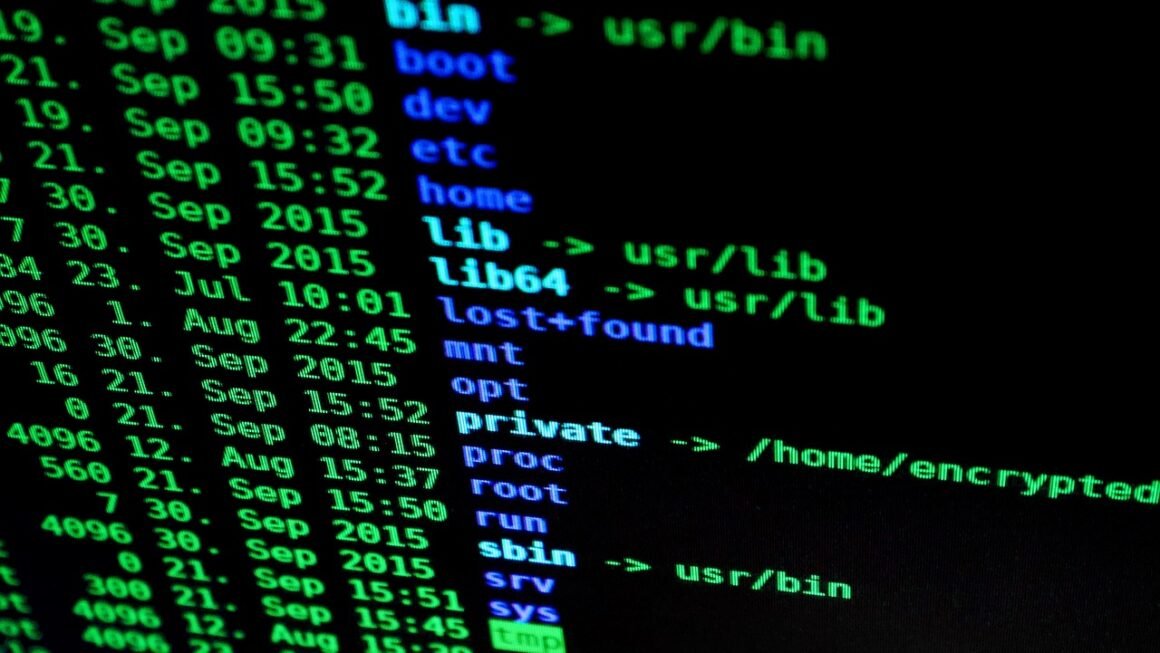Protecting your digital assets in today’s interconnected world is paramount. Network security, a critical aspect of cybersecurity, encompasses a wide range of technologies, processes, and practices designed to safeguard the integrity, confidentiality, and availability of your network and its resources. Without robust network security measures, your organization is vulnerable to data breaches, financial losses, and reputational damage. This comprehensive guide will delve into the essentials of network security, exploring key strategies, technologies, and best practices to help you fortify your defenses against ever-evolving threats.
Understanding Network Security Threats
Common Types of Cyberattacks
Network security threats are becoming increasingly sophisticated, making it essential to understand the different types of attacks you might face:
- Malware: This encompasses various malicious software such as viruses, worms, Trojan horses, and ransomware. For instance, a ransomware attack can encrypt your critical files, demanding a ransom payment for their decryption.
- Phishing: Deceptive emails or websites designed to trick users into revealing sensitive information like usernames, passwords, and credit card details. Example: an email pretending to be from your bank asking you to update your security details through a malicious link.
- Denial-of-Service (DoS) & Distributed Denial-of-Service (DDoS) Attacks: Overwhelming a network with traffic, rendering it unavailable to legitimate users. A DDoS attack uses multiple compromised devices (a botnet) to amplify the attack’s impact. Imagine a flood of fake requests crashing your company website.
- Man-in-the-Middle (MitM) Attacks: An attacker intercepts communication between two parties, potentially eavesdropping or altering data. Using an unsecured public Wi-Fi network increases the risk of MitM attacks.
- SQL Injection: Exploiting vulnerabilities in database-driven applications to gain unauthorized access to sensitive data.
The Growing Cost of Cybercrime
The financial impact of cybercrime is staggering. According to a report by Cybersecurity Ventures, global cybercrime costs are predicted to reach $10.5 trillion annually by 2025. This highlights the urgent need for proactive and effective network security measures. Consider investing in employee training to reduce susceptibility to phishing attacks, which are often the entry point for more sophisticated breaches.
Essential Network Security Components
Firewalls
Firewalls act as a barrier between your network and the outside world, controlling incoming and outgoing network traffic based on predefined security rules.
- Function: Examines network traffic and blocks unauthorized access.
- Types: Hardware firewalls, software firewalls, and next-generation firewalls (NGFWs) offering advanced features like intrusion prevention and application control.
- Example: Configuring a firewall to block traffic from specific IP addresses or to restrict access to certain ports. Regularly reviewing firewall logs is crucial for identifying and responding to suspicious activity.
Intrusion Detection and Prevention Systems (IDS/IPS)
IDS monitors network traffic for suspicious activity and alerts administrators, while IPS actively blocks or prevents malicious activity.
- Function: Detects and prevents intrusions by analyzing network traffic patterns and comparing them against a database of known threats.
- Key Features: Real-time monitoring, threat analysis, automated response.
- Example: An IDS might detect a sudden surge in network traffic originating from an unusual source, indicating a potential DDoS attack. An IPS could then automatically block that traffic.
Virtual Private Networks (VPNs)
VPNs create a secure, encrypted connection over a public network, protecting data transmitted between your device and the network.
- Function: Encrypts internet traffic, masking your IP address and protecting your online activity from eavesdropping.
- Use Cases: Securing remote access to company networks, protecting sensitive data while using public Wi-Fi.
- Example: Employees working remotely can use a VPN to securely connect to the corporate network, ensuring that their data is protected even when using an untrusted internet connection.
Access Control Lists (ACLs)
ACLs define rules that determine which users or devices are allowed to access specific network resources.
- Function: Control access to network resources based on user identity, device type, and other criteria.
- Benefits: Minimizes the attack surface by restricting access to authorized users and devices only.
- Example: An ACL can be configured to allow only authorized employees to access a specific file server, preventing unauthorized access from other users or devices on the network.
Implementing a Robust Network Security Strategy
Risk Assessment and Vulnerability Scanning
Regularly assess your network’s vulnerabilities and potential risks to identify weaknesses and prioritize security efforts.
- Process: Conduct thorough risk assessments to identify potential threats, vulnerabilities, and their potential impact.
- Tools: Utilize vulnerability scanning tools to automatically identify security flaws in your systems and applications.
- Actionable Takeaway: Prioritize addressing high-risk vulnerabilities first and develop a remediation plan.
Network Segmentation
Divide your network into smaller, isolated segments to limit the impact of a security breach.
- Benefits: Contains breaches, prevents lateral movement of attackers within the network, improves security monitoring.
- Example: Separating your guest Wi-Fi network from your internal corporate network prevents unauthorized access to sensitive data if the guest network is compromised.
- Implementation: Using VLANs (Virtual LANs) to logically separate different network segments.
Employee Training and Awareness
Educate your employees about common cybersecurity threats and best practices to minimize human error.
- Topics: Phishing awareness, password security, safe browsing habits, social engineering prevention.
- Methods: Regular training sessions, simulated phishing attacks, security newsletters.
- Impact: Empowering employees to identify and avoid potential threats can significantly reduce the risk of successful attacks. A recent study showed that companies with regular security awareness training saw a 70% decrease in successful phishing attacks.
Regular Security Audits and Updates
Conduct regular security audits to assess the effectiveness of your security controls and identify areas for improvement. Keep your software and systems up to date with the latest security patches to address known vulnerabilities.
- Audits: External audits provide an unbiased assessment of your security posture.
- Updates: Patching vulnerabilities is a critical aspect of maintaining network security.
- Best Practice: Automate the patching process whenever possible to ensure timely updates.
The Importance of Network Monitoring and Logging
Centralized Log Management
Implement a centralized log management system to collect and analyze logs from various network devices and applications.
- Function: Provides a single platform for collecting, storing, and analyzing security logs.
- Benefits: Facilitates threat detection, incident response, and compliance reporting.
- Example: Analyzing firewall logs can help identify suspicious traffic patterns, while monitoring user activity logs can reveal unauthorized access attempts.
Security Information and Event Management (SIEM)
SIEM systems provide real-time security monitoring and analysis, correlating events from different sources to detect potential threats.
- Function: Collects and analyzes security logs and events from various sources, providing real-time threat detection and incident response capabilities.
- Key Features: Log aggregation, correlation, anomaly detection, incident alerting.
- Example: A SIEM system might correlate login failures from multiple locations within a short period of time, indicating a potential brute-force attack.
Network Performance Monitoring
Monitor network performance metrics to identify anomalies that could indicate security issues or performance bottlenecks.
- Metrics: Bandwidth utilization, latency, packet loss.
- Benefits: Proactively identify and resolve network performance issues, detect potential security threats.
- Example: A sudden increase in network latency could indicate a DDoS attack or a malware infection.
Conclusion
Network security is an ongoing process that requires continuous monitoring, adaptation, and improvement. By understanding the threats, implementing essential security components, and following best practices, you can significantly reduce your risk of falling victim to cyberattacks. Investing in robust network security is not just an expense; it’s an investment in the long-term health, stability, and success of your organization. Remember to stay informed about the latest threats and technologies, and adapt your security strategy accordingly.



